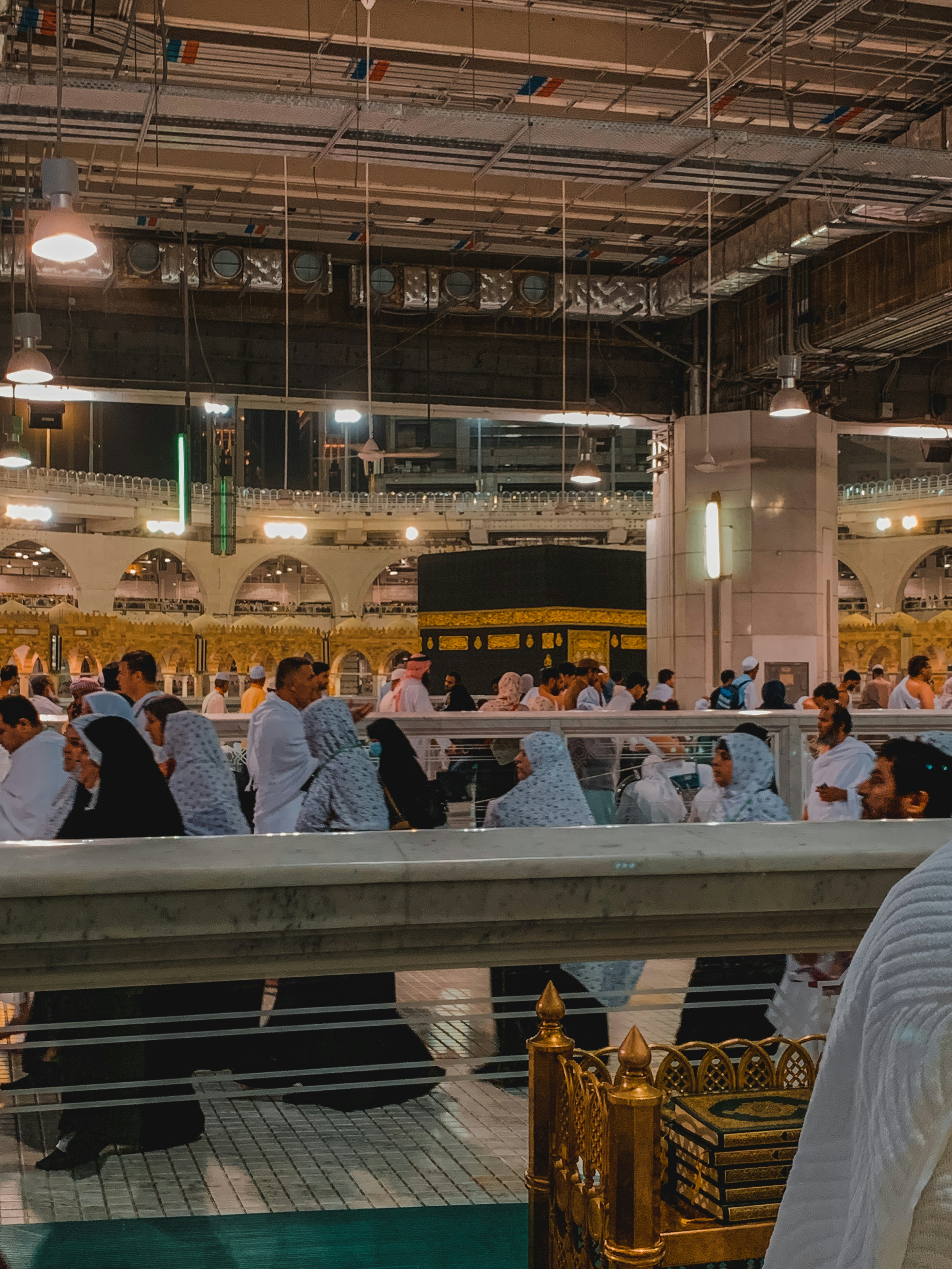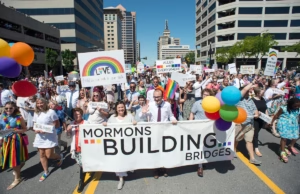Revival Movements: What’s Happening Around the World?

Photo by Ismael Paramo on Unsplash
Introduction to Revival Movements
Revival movements represent a fascinating and dynamic aspect of religious and cultural history, often characterized by profound transformations within communities, faith traditions, and societal structures. Historically, these movements emerge in response to perceived spiritual decline, cultural disintegration, or socio-political challenges, aiming to rekindle fervent belief in the divine. They are frequently marked by a renewed emphasis on the influence and action of the Holy Spirit, prompting individuals and congregations to reassess their faith, values, and practices.
Significantly, revival movements do not exist in isolation; rather, they are influenced by and contribute to the broader global faith landscape. Throughout history, many key revivals have sprung from societal discontent, where participants sought to re-establish a personal and communal connection with their faith amidst growing secularism or apathy. Iconic examples such as the First and Second Great Awakenings in the United States highlight the transformative power of these movements, which often manifested through increased church attendance, extensive missionary work, and a flourishing of spiritual literature.
In contemporary society, revival movements continue to spread across various geographical regions, demonstrating a remarkable resurgence of interest in spiritual renewal and an awakening of the divine presence. Numerous global faith communities are experiencing unprecedented growth, marked by growing congregations, thriving worship services, and a reinvigoration of traditional practices. Additionally, these movements frequently embrace modern methods of communication, enabling widespread dissemination of their beliefs and practices through social media, conferences, and international outreach.
Ultimately, revival movements serve as an essential lens through which to examine the ongoing evolution of faith communities worldwide. They reflect the enduring human quest for meaning, connection, and transcendence, while also highlighting the pivotal role that the Holy Spirit plays in guiding individuals toward a deeper spiritual experience. As we explore various revival movements around the globe, it becomes clear that these phenomena are integral to understanding the evolving landscape of contemporary spirituality.
Historical Background of Revival Movements
The concept of revival has deep historical roots, primarily influencing and shaping the trajectory of Christian faith across various cultures and regions. One of the earliest and most notable periods of revitalization was the Great Awakening of the 18th century in America and Europe. This movement was characterized by a surge of religious fervor that sought to invigorate the faith of individuals and communities through passionate preaching and a personal relationship with the Holy Spirit. Key figures, such as Jonathan Edwards and George Whitefield, emerged during this time, advocating for direct experiences with the divine and emphasizing personal salvation.
Revival movements often arise in response to social and spiritual stagnation, leading to a widespread reawakening of faith. In America, the Great Awakening laid the groundwork for the Second Great Awakening, which occurred in the early 19th century, expanding the revival spirit across the frontier. This movement brought forth camp meetings, where large gatherings allowed individuals to engage with the holy messages and foster a sense of community. The emphasis on personal conversion and the active participation of the Holy Spirit in one’s life has continued to influence the nature of global faith throughout the years.
- IGNITE YOUR SPIRITUAL JOURNEY – Ever feel like you’re just going through the motions? Our Prazoli Christian Motivational…
- YOUR FAITHFUL COMPANION – Rain or shine, our water-resistant vegan leather journal is ready for the journey every day. I…
- THE GIFT OF A LIFETIME – Imagine the joy on their face when they unwrap this! Encased in a beautiful black box with a ri…
Contemporary Revival Movements: Global Overview
The landscape of contemporary revival movements is a reflection of changing spiritual dynamics across various regions. These movements are characterized by renewed enthusiasm in faith practices and increased participation among communities. In North America, religious revival can be observed through various events such as large-scale gatherings and conferences that promote the teachings of the Holy Spirit and emphasize personal encounters with God. These events often see significant attendance from diverse demographic groups, driven by a desire for deeper spiritual connection.
In South America, revival movements have surged, particularly through the growth of Pentecostal and Evangelical denominations. These churches have embraced vibrant worship styles, emphasizing the transformative power of the Holy Spirit. This resurgence is often linked to socio-economic challenges, as communities seek hope and healing in their faith practices. The charismatic nature of these movements resonates deeply with the local population, who are eager for authentic experiences of spiritual renewal.
Moving to Africa, the continent is experiencing a remarkable wave of revival characterized by impactful megachurches and grassroots movements. These gatherings serve as a response to various social upheavals, offering both spiritual fulfillment and communal support. Many churches focus on the manifestation of miracles and testimonies, which reinforce believers’ faith and encourage widespread participation. In contrast, Asia presents a different scenario, where underground movements flourish in regions where Christianity is not widely accepted. Here, faith practices often blend with local cultures, resulting in unique expressions of Christian revival.
Lastly, Europe, traditionally seen as a post-Christian society, is witnessing smaller yet significant revival movements. These often emerge in urban areas, focusing on issues such as social justice and environmental stewardship. Believers are joining forces, driven by a renewed commitment to their faith in addressing contemporary challenges. Collectively, the revival trends in these regions illustrate how global faith is evolving, deeply influenced by societal changes and the movements of the Holy Spirit.
Key Ingredients of Successful Revival Movements
Revival movements have a profound impact on communities and individuals, often serving as a catalyst for renewed faith and dedication within various religious contexts. At the core of these movements are several key ingredients that contribute significantly to their success. One pivotal element is charismatic leadership. Leaders who embody strong spiritual conviction and inspire passion in their followers are instrumental in mobilizing collective efforts towards a shared vision. These leaders often invoke the presence of the Holy Spirit, fostering an environment that embraces transformative experiences and deep spiritual awakenings.
Another essential factor is community engagement. Successful revival movements thrive in environments where individuals feel a sense of belonging and shared purpose. Engaging the local community not only strengthens social ties but also creates a collective consciousness aware of the need for change. By tapping into existing discontent or spiritual yearning among community members, revival movements can foster an atmosphere ripe for transformation. Activities such as community service, prayer gatherings, and outreach initiatives cultivate bonds among participants and reinforce the connection to a greater global faith.
Cultural contexts also play a significant role in shaping revival movements. Understanding the sociocultural dynamics of a community aids in tailoring messages that resonate deeply with its members. Effective communication strategies that respect cultural norms and values can amplify the outreach of revival initiatives. The blending of traditional practices with contemporary worship can create a dynamic that attracts a wider audience, particularly among younger generations seeking relevance in their spiritual journeys.
In conclusion, successful revival movements are the result of intertwined factors such as charismatic leadership, meaningful community engagement, and an acute awareness of sociocultural contexts. By leveraging these critical ingredients, movements can harness the collective desire for spiritual renewal, fostering a stronger connection to the Holy Spirit and enhancing the overall power of global faith. This intricate dance of elements underscores the significance of each component in the lifecycle of revival initiatives worldwide.
Case Studies: Notable Modern Revival Movements
The Asbury Revival, originating from Asbury University in Wilmore, Kentucky, has gained significant attention in recent years for its profound impact on the local and global Christian community. This movement traces its roots back to the 1970s when a spontaneous outpouring of prayer and worship initiated an extended chapel gathering that lasted for days. The Asbury Revival is characterized by its emphasis on student-led worship, heartfelt confession, and a committed return to biblical teachings. This powerful experience has stirred interest not only within the United States but has also resonated globally, inspiring similar movements in university campuses across the world.
Another notable revival movement is the resurgence of Pentecostalism, particularly in regions such as Africa, Latin America, and Asia. As the Holy Spirit’s influence spreads, these faith communities have experienced dramatic growth. The Pentecostal movement emphasizes personal encounters with the divine, excelling in practices such as speaking in tongues, prophecies, and healing services. These vibrant gatherings cultivate a sense of spiritual empowerment among believers, contributing to a robust and energetic form of worship that often leads to increased church attendance and community involvement. With an emphasis on personal experience and faith, these revival movements underscore the pivotal role of the Holy Spirit in driving transformation and unity among Christians globally.
Indigenous revival movements also merit recognition, as they exemplify the integration of traditional practices with Christianity. In regions like South America and parts of Africa, indigenous groups have begun to incorporate their cultural heritage into their worship, resulting in a unique expression of faith that resonates deeply with local traditions. These movements are marked by a strong sense of community and belonging, relying on collective prayer, songs, and rituals that honor both the Christian faith and ancestral customs. The effectiveness of these revivals demonstrates how faith can adapt and evolve within diverse cultural landscapes, fostering a broader understanding of global Christianity.
The Role of Technology in Modern Revival Movements
In the 21st century, technology has significantly influenced the dynamics of christian revival movements, altering how communities engage and express their faith. One prominent aspect is the use of social media platforms, which serve as vital tools for promoting revival activities and reaching broader audiences. Through platforms such as Facebook, Twitter, and Instagram, churches and religious organizations are able to share their messages, promote events, and foster connections among believers across the globe. This ability to communicate instantly has been instrumental in revitalizing faith communities, enabling a global interaction that was previously unobtainable.
Furthermore, livestreaming services have emerged as a powerful method for disseminating religious messages and engaging individuals unable to attend physical gatherings. By broadcasting sermons, worship sessions, and prayer meetings online, revival movements can extend their reach well beyond local congregations. The holy spirit’s presence, as experienced in communal worship, can now be shared with individuals in remote areas or those who face barriers to participation due to illness or other circumstances. This shift towards digital outreach allows for a more inclusive environment, ultimately contributing to the growth of global faith.
However, while technology enhances community building in many ways, it also presents challenges that require careful consideration. The anonymity and distance of online engagement can sometimes lead to a lack of personal connection, which is vital for nurturing faithful relationships. Additionally, public perception of faith movements may be affected by the overwhelming presence of social media, where narratives can easily shift and misrepresentations can occur. It is essential for revival movements to navigate these complexities, ensuring that technology serves as a tool for genuine connection rather than a barrier. In conclusion, as revival movements embrace technological advancements, they must balance the benefits with the responsibilities that come with fostering a vibrant, accessible faith community.
Challenges and Criticisms Facing Revival Movements
The landscape of christian revival is often tumultuous, marked by a range of challenges and criticisms that these movements must navigate. One prominent barrier arises from established religious organizations, which may view revival movements as threats to their traditional structures and doctrinal purity. This resistance can manifest in various forms, from outright condemnation to more subtle forms of exclusion, leading to friction between established churches and growing revivalistic tendencies. In many instances, this tension can hinder the ability of new movements to gain traction within the broader framework of global faith.
Internal conflicts represent another significant challenge facing revival movements. Disputes over doctrinal interpretations, leadership roles, and the application of the holy spirit’s influence can create divisions among adherents. Such fragmentation not only weakens the movement’s cohesion but also poses a risk of diminishing its spiritual efficacy. Additionally, leadership controversies can arise, with charismatic figures drawing both fervent support and intense scrutiny. When leaders fail to align with the ethical standards expected by their followers, or when allegations of misconduct emerge, trust within the community erodes swiftly, potentially leading to mass disillusionment.
Societal skepticism adds another layer of difficulty for revival movements. In an increasingly secular world, there is often resistance to the emotional and spontaneous nature that characterizes many revival experiences. Critics may label these movements as extreme or insincere, an assumption that fuels doubt among potential followers and hinders outreach efforts. Furthermore, the balance between tradition and modernity presents ongoing dilemmas. While revival movements often aim to rejuvenate faith, they must also respect the historical foundations of Christianity, which can lead to tensions as they strive to maintain authenticity in a rapidly evolving religious landscape.
The Future of Revival Movements
The future of revival movements is poised to be shaped by several notable trends that reflect a dynamic interplay between global faith practices and emerging societal shifts. One significant theme is the emergence of interfaith collaborations. As individuals increasingly seek common ground amidst diversity, various religious communities are engaging in dialogue and joint initiatives. These partnerships, often driven by shared values such as compassion and social justice, pave the way for a more inclusive approach to spirituality. The Holy Spirit is seen as a unifying force in this context, inspiring believers to transcend denominational boundaries in pursuit of comprehensive revival.
Another trend gaining traction is the rise of new spiritualities that blend traditional religious practices with contemporary beliefs and experiences. Many individuals, particularly the younger generations, are exploring personalized faith expressions that draw from multiple sources, including indigenous practices, mindfulness, and holistic wellness. This transformation can be perceived as a response to the spiritual void created by materialism and consumerism. It suggests a reawakening of the human spirit, which can be interpreted as a modern revival movement fueled by the thirst for authenticity and deeper connection with the divine.
The effects of globalization and migration patterns also play a vital role in shaping the future landscape of these movements. As people move across borders, they bring their faith traditions with them, creating multicultural and multiethnic congregations. These environments often foster vibrant revival atmospheres where various customs and practices converge. Predictions indicate that such cultural exchanges will continue to enrich the faith landscape, giving rise to new expressions of worship and community that resonate with diverse populations. In this evolving context, revival movements are likely to influence societal norms and values, promoting tolerance, understanding, and collective purpose as they adapt to the needs of a globalized society.
- Butterfly appearance plus biblical theme design: featuring classic Bible quotes and delicate butterfly shapes, these acr…
- Long term service: the souvenir gift is made of quality transparent acrylic material, strong and reliable, not easily de…
- Lightweight and portable: faith gifts for women measure about 5.91 x 3.94 x 0.59 inches/ 15 x 10 x 1.5 cm, lightweight a…
Conclusion and Reflections
In reflecting on the contemporary landscape of christian revival movements, it becomes clear that these phenomena represent significant shifts within the sphere of global faith. From grassroots initiatives to large-scale gatherings, the renewed interest in spirituality and the influence of the Holy Spirit can be observed across diverse cultures and communities. These movements reveal not only a return to traditional teachings but also a transformative engagement with contemporary issues, bridging divides and fostering a sense of unity among believers.
The implications of these revival movements extend beyond purely religious contexts; they also pave the way for social change. As individuals experience a revitalization of their faith, they often feel compelled to address local and global challenges, such as poverty, injustice, and inequality. This pursuit highlights the interconnectedness of faith and action, showcasing how christian revival is not just a personal experience but a catalyst for collective transformation. It prompts believers to re-evaluate their roles within society and encourages them to contribute positively to their communities.
Moreover, the richness of these movements invites a deeper investigation into their origins, practices, and impacts on global faith. Each revival bears unique characteristics shaped by historical and cultural contexts, offering valuable insights into the nature of spirituality today. As such, individuals are encouraged to explore these dimensions further, whether through participation in local events, scholarly research, or interfaith dialogues. Engaging with these topics can enrich one’s understanding of the Christian faith and its potential to resonate in an increasingly complex world.
Ultimately, as we witness the unfolding of revival movements, it is essential to approach them with an open mind and heart, recognizing their power to influence not only personal faith journeys but also broader societal changes. In conclusion, the exploration of these movements presents both an opportunity for spiritual growth and a call to action in addressing the needs of the world around us.
















Leave a Reply
You must be logged in to post a comment.